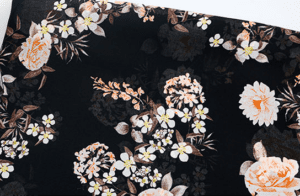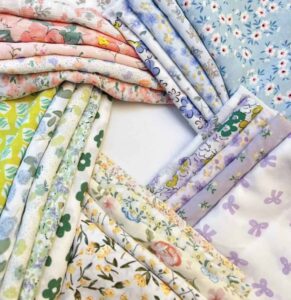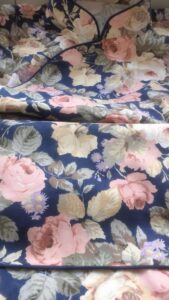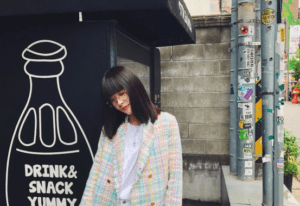Types of fabric splicing
Homogeneous and homogeneous color splicing.
Most of the design of the style with splicing and bone position, belongs to the most basic use techniques.
Heterogeneous and homogeneous color splicing (glossy contrast).
The visual effect is relatively subtle, the degree of subtlety depends on the contrast of luster and splicing area size.
(High requirements for materials, high requirements for workmanship techniques)

Heterogeneous and homogeneous patchwork (thickness contrast).
When the style looks dull, try to change the thickness of some fabrics, so that the design can look more “alive” without changing the style structure and lines.
(Common material requirements, high technical requirements for workmanship)

Heterochromatic homogeneous splicing (color contrast).
This application technique is not recommended to splice too large an area, more applicable to image models.
(high requirements for material color fastness, high requirements for workmanship)

Homochromatic heterogeneous overlay (level contrast).
Very effective use of the technique, but the seams of the process risk is relatively large.
(high requirements for material solidity, high requirements for workmanship)

Net color and pattern contrast splicing.
It is recommended to use the same color net color fabric and pattern splicing, two pieces of fabric material properties as close as possible. (Thickness, drape, etc.)
(slightly higher requirements for material, slightly higher requirements for workmanship)

How to use fabric design with highlights
I have summarized the following 10 examples of use, which can be used for reference in thinking.
XX style with modern elements
This rule requires a certain design foundation or match foundation to master.
However, it is not difficult, just need to grasp the essence, clear single product style attributes, usually do more deliberate practice, while improving the perceptual aesthetics on it. The principle is that the two style attributes must be the opposite, so that the combination effect is dramatic and more colorful.
For example, the modern punk style material + feminine silhouette style.
Feminine style with modern elements.

Show effect.

XX style with futuristic elements
For example, the styling of the girl style, combined with the future elements of the fabric material, forming a strong contrast.

Feminine styles with futuristic elements.

Woven material with woolen elements
This rule of matching contrast is very suitable for young feeling brands. It is relatively suitable for the autumn and winter seasons. The roughness of the woolen material contrasts with the delicate woven surface.

More practical cases.

Sportswear with female elements
For example, sporty style fabrics with female elements of organza, breaking the traditional fabric combination idea:.

More practical cases.

Workwear with female elements
For example, the combination of leather, twill workwear fabric and tulle.
As the style attributes of workwear style and romantic style are extremely different, the two put together will produce dramatic conflict and the design will not be so boring.

Overall effect.

Streetwear with female elements
The combination of rustic, ethnic and street style, one hard and one soft, creating a design conflict.

Street style with ethnic rustic elements.

Outdoor wear with ethnic elements
With the use of fabrics with different properties in the material, so that the effect of strong contrast, rich layers, but also has a certain visual impact. Although it is more difficult to control, but we just need to pay attention to the fabric contrast is large when the color as uniform as possible will not go wrong.
For example, the combination of outdoor clothing fabrics and ethnic style woven.

Show effect.

Add a sporty element to formal wear
Glossy fabrics will add a sense of drama, while the visual effect will be outstanding. In addition to satin fabrics, there are also materials with a very strong sense of shine such as leather and PVC.
For example, formal wear styles combined with sports/future elements materials.

Casual wear with luxury elements
This rule is very practical and is the point of covering a wider range. When you feel that the fabric combination is “dull”, try to find a lustrous material to match in, the effect will be beyond your expectation.
For example, cotton shirt fabric, and gorgeous sequin fabric combination, combined with two different character fabrics, forming a contrast visual effect:.

Contrast of properties
Soft vs. stiff, rough vs. smooth, matte vs. shiny.
The extreme contrast of fabric material properties almost completely opposite. It should be noted that such a combination of two material fabrics, try not to have the contrast of color or pattern.


Conclusion.
In conclusion, design thinking is all connected.
Don’t be afraid to build innovation on rules. The more timid you are, the more traditional you become.
























